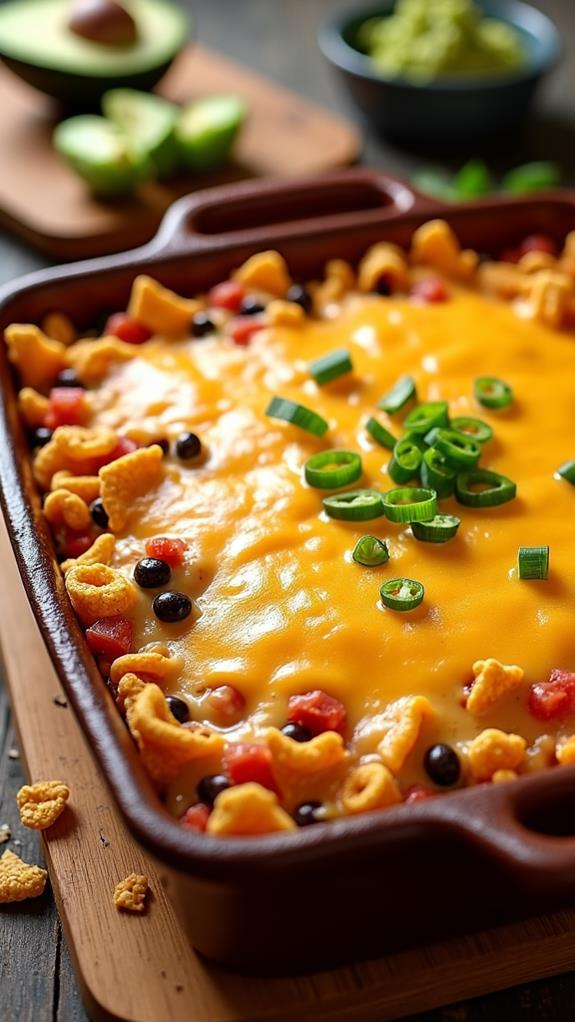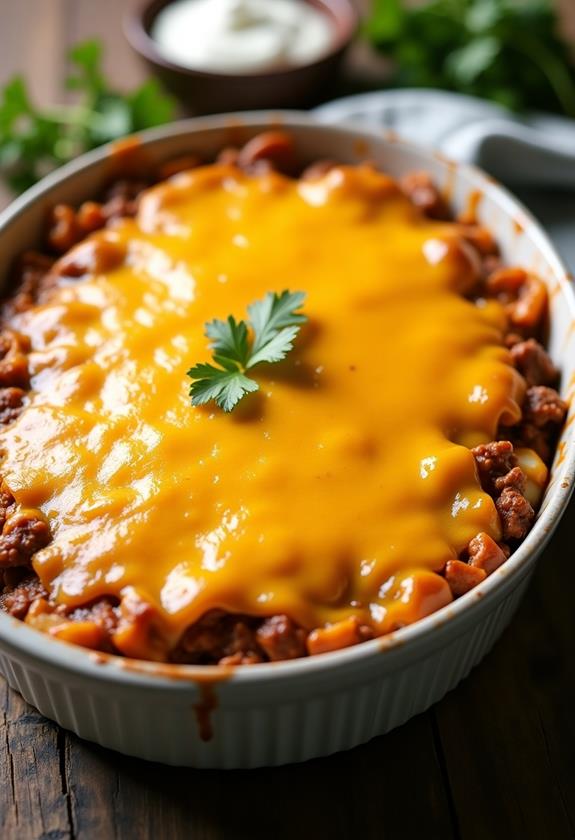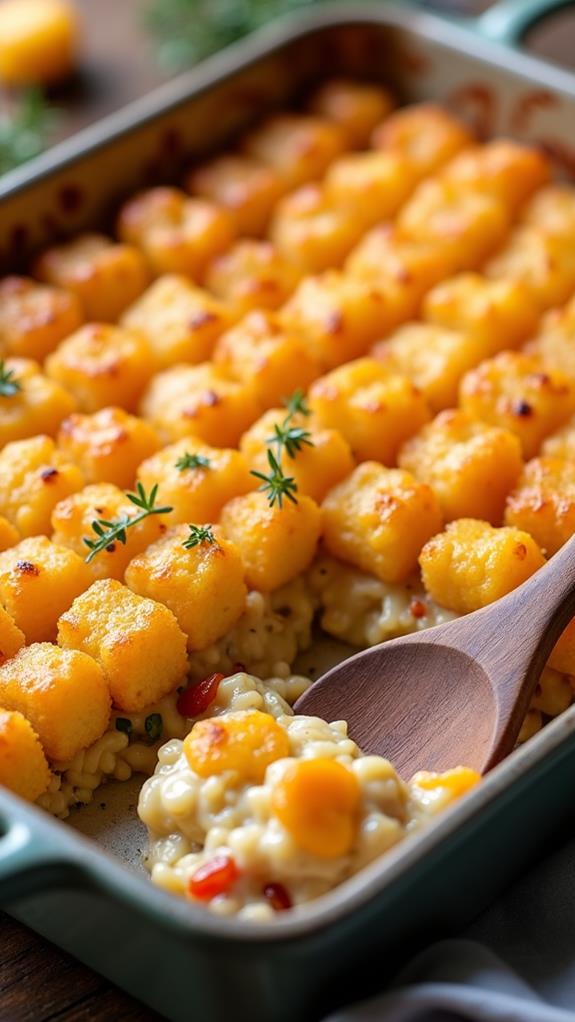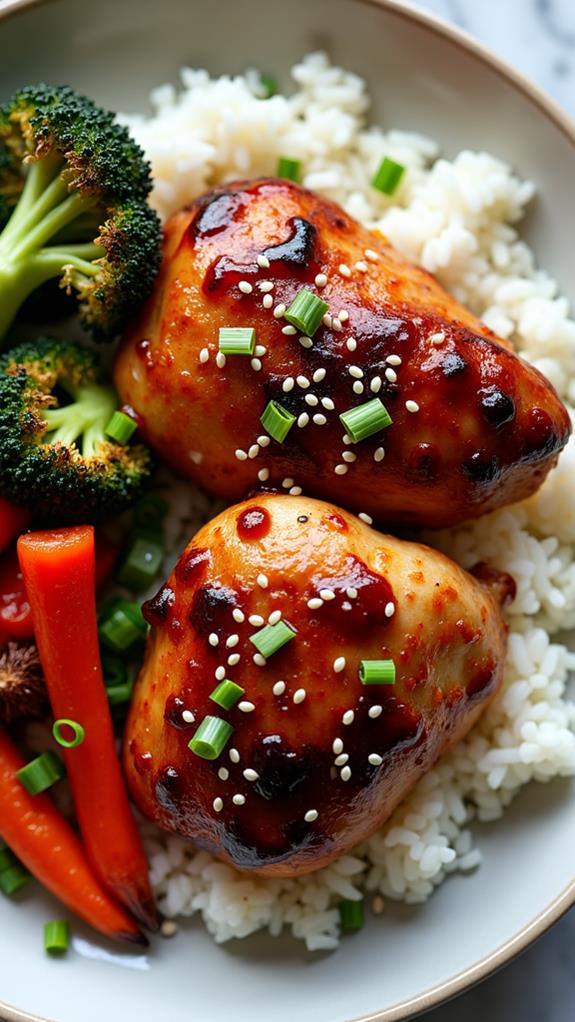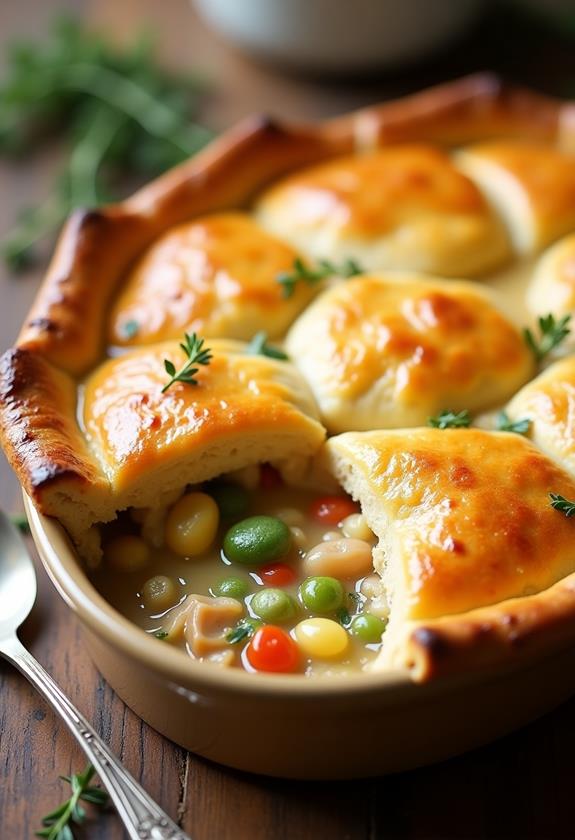Fish En Papillote Recipe
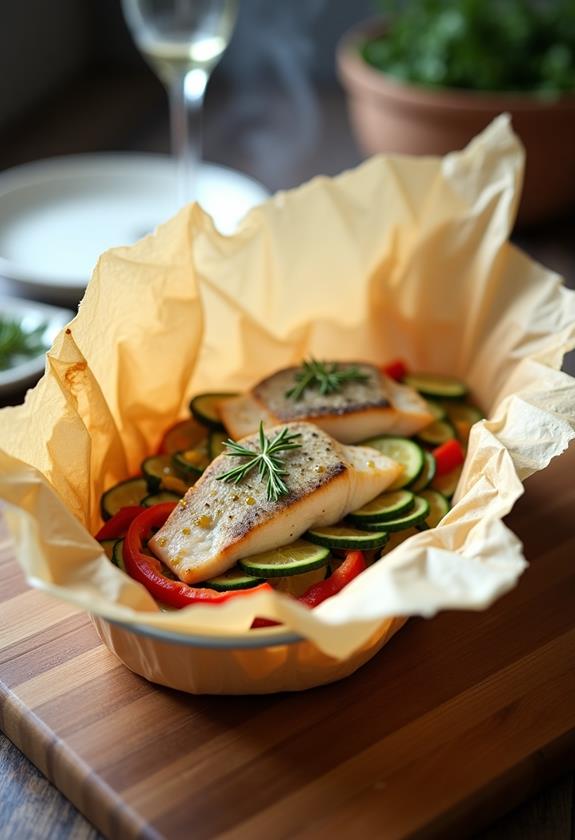
Imagine yourself preparing a meal that not only impresses with its elegance but also keeps things simple in the kitchen. Fish en papillote might just be the culinary delight you've been looking for. You'll start by preheating your oven to 400°F and cutting parchment paper squares, creating a canvas for your culinary artistry. As you season your fish and layer it with vibrant vegetables, the anticipation builds. But how do you guarantee that perfect balance of flavors and textures? There's an art to sealing those packets just right, and mastering it could transform your cooking game.
Recipe
Fish en Papillote is a delightful French dish that combines simplicity and elegance, making it a perfect choice for both everyday meals and special occasions. The technique of cooking fish in parchment paper allows the fish and vegetables to steam in their own juices, resulting in a flavorful and moist dish. The aroma that escapes when you cut open the parchment packet is an experience in itself, as the scents of herbs, lemon, and perfectly cooked fish fill the air. This method not only enhances the natural flavors of the fish but also guarantees that it remains tender and succulent.
The beauty of Fish en Papillote lies in its versatility. You can easily adapt the recipe to suit your taste preferences by experimenting with different types of fish, vegetables, and herbs. Whether you're a novice in the kitchen or an experienced cook, this dish offers a straightforward preparation with minimal cleanup, making it an appealing option for any home cook. Plus, it's a healthy choice, as it uses minimal oil and allows the natural flavors of the ingredients to shine.
Ingredients:
- 4 fish fillets (such as salmon or cod)
- 1 lemon, thinly sliced
- 1 zucchini, julienned
- 1 red bell pepper, sliced
- 1 small red onion, thinly sliced
- 4 sprigs of fresh thyme
- 4 tablespoons of olive oil
- Salt and pepper to taste
- Parchment paper
To prepare Fish en Papillote, begin by preheating your oven to 400°F (200°C) and cutting four large squares of parchment paper, approximately 15 inches each. Place one fish fillet in the center of each parchment square and season with salt and pepper. Distribute the vegetables and lemon slices evenly over the fish, and add a sprig of thyme to each. Drizzle each fillet with a tablespoon of olive oil.
Fold the parchment paper over the fish and vegetables, and crimp the edges tightly to seal the packets. Arrange the packets on a baking sheet and bake for 12-15 minutes until the fish flakes easily with a fork. Serve the packets directly on plates, letting each guest open their own to enjoy the aromatic steam.
For ideal results, verify that the parchment packets are sealed well to trap the steam, which is vital for even cooking and maintaining moisture. You can prepare the packets ahead of time and refrigerate them until you're ready to bake, making it convenient for entertaining.
Feel free to experiment with different herbs like dill or parsley, or add other thinly sliced vegetables according to your preference. Adjust the seasoning to suit your taste, and enjoy the endless possibilities this versatile dish offers.
Cooking Steps
Alright, let's get cooking!
First, preheat your oven to 400°F, because nobody likes cold fish, right?
Next, cut four large squares of parchment paper, about the size of a small kite.
Then season your fish with salt, top with julienned zucchini, lemon slices, and a sprig of thyme for that extra zing.
Step 1. Preheat Oven to 400°F
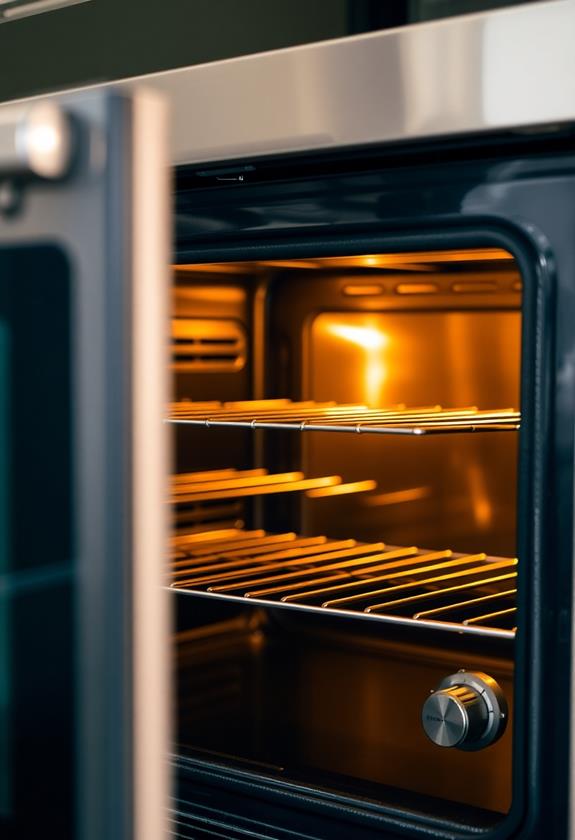
Why start with anything else when heating the oven to the perfect temperature is essential for this dish?
You'll want to set your oven to 400°F, which is ideal for gently baking the fish and veggies in their cozy parchment pouches. It's like creating a mini sauna for your ingredients, making sure they stay perfectly moist and flavorful.
While your oven heats up, you can use this time to gather and prep the veggies and other ingredients.
Just remember: patience is key. Let the oven reach the right temperature before popping in your fish packets. This way, you're ensuring the fish cooks evenly and doesn't end up with a cold center or dry edges.
Trust us, your taste buds will thank you!
Step 2. Cut Parchment Paper Squares
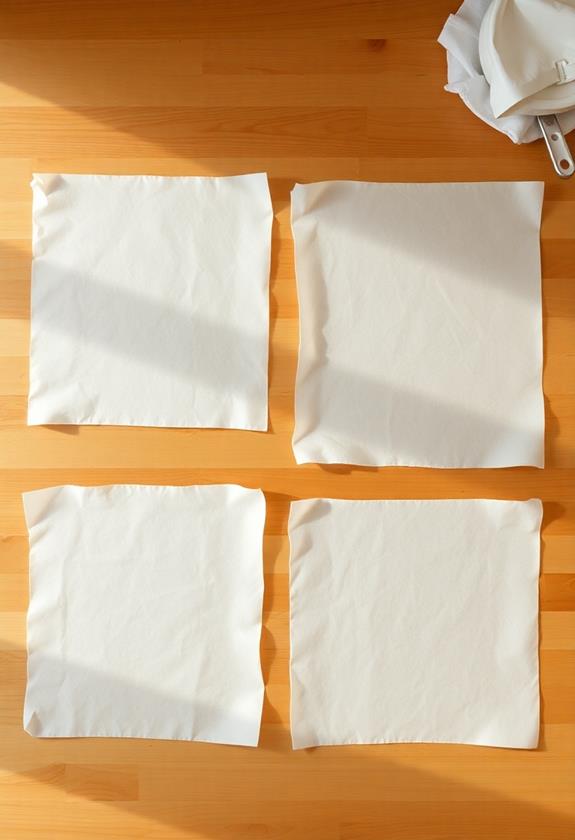
As your oven reaches the perfect temperature, turn your attention to preparing the parchment paper squares.
You'll need to cut four large squares, each about 15 inches on each side. Think of this as origami for your dinner, minus the cranes. You want enough paper to wrap around the fish and veggies snugly, like a cozy blanket.
Grab some parchment paper and scissors, and channel your inner craftsperson. Cut with confidence—no rulers required!
Make certain the squares are big enough to fold over the fish and veggies with a bit of overlap. This guarantees no tasty steam escapes during cooking.
And remember, it doesn't have to be perfect; you're not entering a paper-cutting competition. Enjoy this little prep step before the real culinary magic begins!
Step 3. Season Fish With Salt

Begin by laying each fish fillet in the center of its parchment paper square, ready for seasoning.
Now, grab your trusty salt shaker like it's Excalibur. Sprinkle salt evenly over each fillet, ensuring you've got a good, even coat—don't go overboard and make it taste like the ocean! You want just enough to enhance the fish's natural flavor.
Imagine you're sprinkling fairy dust over a magical dish; a little goes a long way. Remember, you can always add more salt later, but you can't take it off!
Seasoning is where the culinary magic begins, setting the stage for all the other flavors to shine. With the salt in place, you're one step closer to a delightful meal.
Step 4. Add Julienned Zucchini Slices
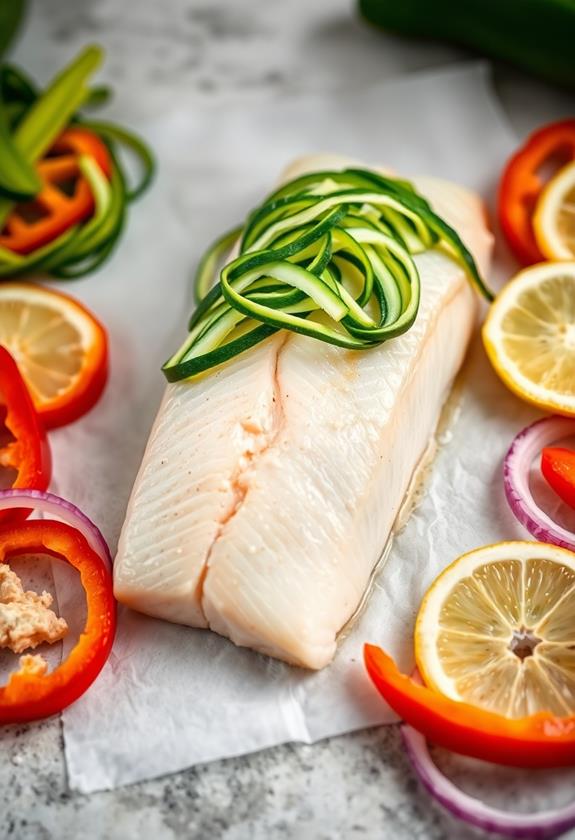
With the salt perfectly enhancing your fish fillets, it's time to introduce the fresh, vibrant touch of julienned zucchini slices.
Just imagine those thin, green ribbons dancing on top of your fish, adding a splash of color and a delightful crunch. Grab your zucchini and a sharp knife, or a trusty mandoline if you've got one, and carefully slice it into thin matchsticks—think of them as the skinny jeans of veggies.
Sprinkle these ribbons over your fillets, ensuring even coverage. Zucchini is like that friend who gets along with everyone, effortlessly soaking up the flavors around it.
It's subtle but adds a nice texture. Plus, it's a great way to sneak in some veggies without anyone even noticing.
Step 5. Add Lemon and Thyme
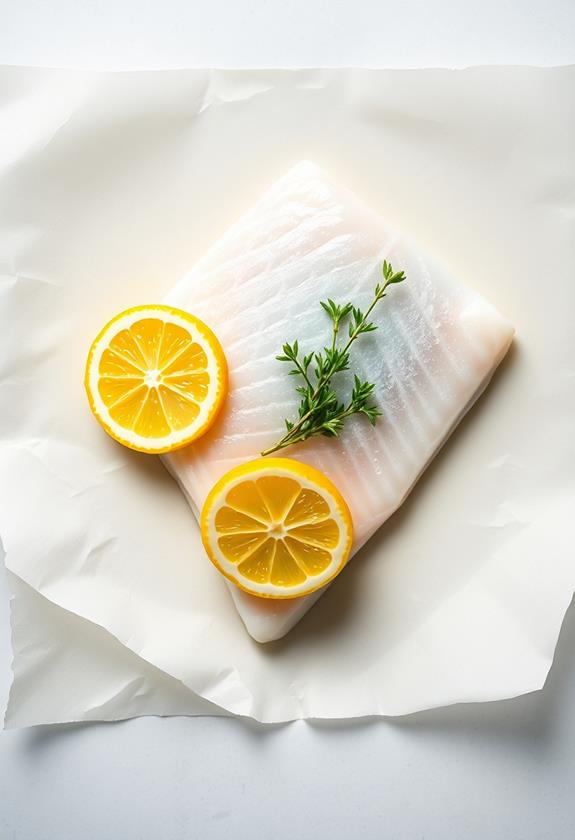
Now that your zucchini ribbons are artfully arranged on the fish, it's time to add the bright, zesty notes of lemon and the earthy aroma of fresh thyme.
Lay a few thin lemon slices over each fillet; they'll infuse the fish with a citrusy kick, making it feel like a mini seaside vacation.
Next, place a sprig of thyme on top. Don't worry if a few leaves scatter—it's part of the charm! The thyme's earthy essence will blend beautifully with the lemon, adding a touch of sophistication.
Final Thoughts
Embracing the art of cooking Fish en Papillote offers a delightful blend of simplicity and elegance that's sure to impress. You get to enjoy a dish that's both healthy and flavorful, without spending hours in the kitchen.
It's like a little surprise party on your plate—who knew paper could be so fancy? Plus, cleanup is a breeze, which means more time to savor your creation.
Don't worry if you're not a top chef; this recipe is as forgiving as it's delicious. Feel free to mix and match vegetables or herbs to suit your taste.
If you're feeling adventurous, swap out the lemon for a dash of white wine. Remember, the true joy of cooking lies in the journey, not just the destination.
[DIRECTIONS]:
Frequently Asked Questions
What Types of Fish Work Best for Fish En Papillote?
You'll want to choose fish fillets like salmon, cod, or halibut for en Papillote. These types work best because they're firm and moist, ensuring they cook evenly and absorb the flavors beautifully during the steaming process.
Can I Substitute Parchment Paper With Aluminum Foil?
Yes, you can substitute parchment paper with aluminum foil for fish en papillote. Just make certain you tightly seal the foil to trap steam. Keep in mind, foil may affect presentation and slightly alter flavors compared to parchment.
How Can I Tell if the Fish Is Fully Cooked?
You'll know the fish is fully cooked when it flakes easily with a fork and appears opaque throughout. Check the thickest part for doneness, ensuring it reaches an internal temperature of 145°F for safety.
Is It Possible to Add Wine or Broth for Extra Flavor?
Yes, you can add wine or broth to the packet for extra flavor. Just splash a little before sealing the parchment. This creates steam, infusing the fish and vegetables with rich, aromatic notes. Enjoy experimenting!
How Long Can I Store Uncooked Packets in the Refrigerator?
You can store uncooked packets in the refrigerator for up to 24 hours. Guarantee they're tightly sealed to maintain freshness. This allows flavors to meld, making the dish even more delicious when you're ready to bake it.
Conclusion
You've got this! Fish en papillote is not just a fancy name, it's a fun and simple way to cook. Once you've seasoned your fish and layered those delicious veggies, herbs, and lemon slices, just let the oven work its magic. In no time, you'll have a tasty, healthy meal that feels like a mini culinary adventure. And hey, the best part? No messy pots to clean up afterward. Bon appétit, chef!

